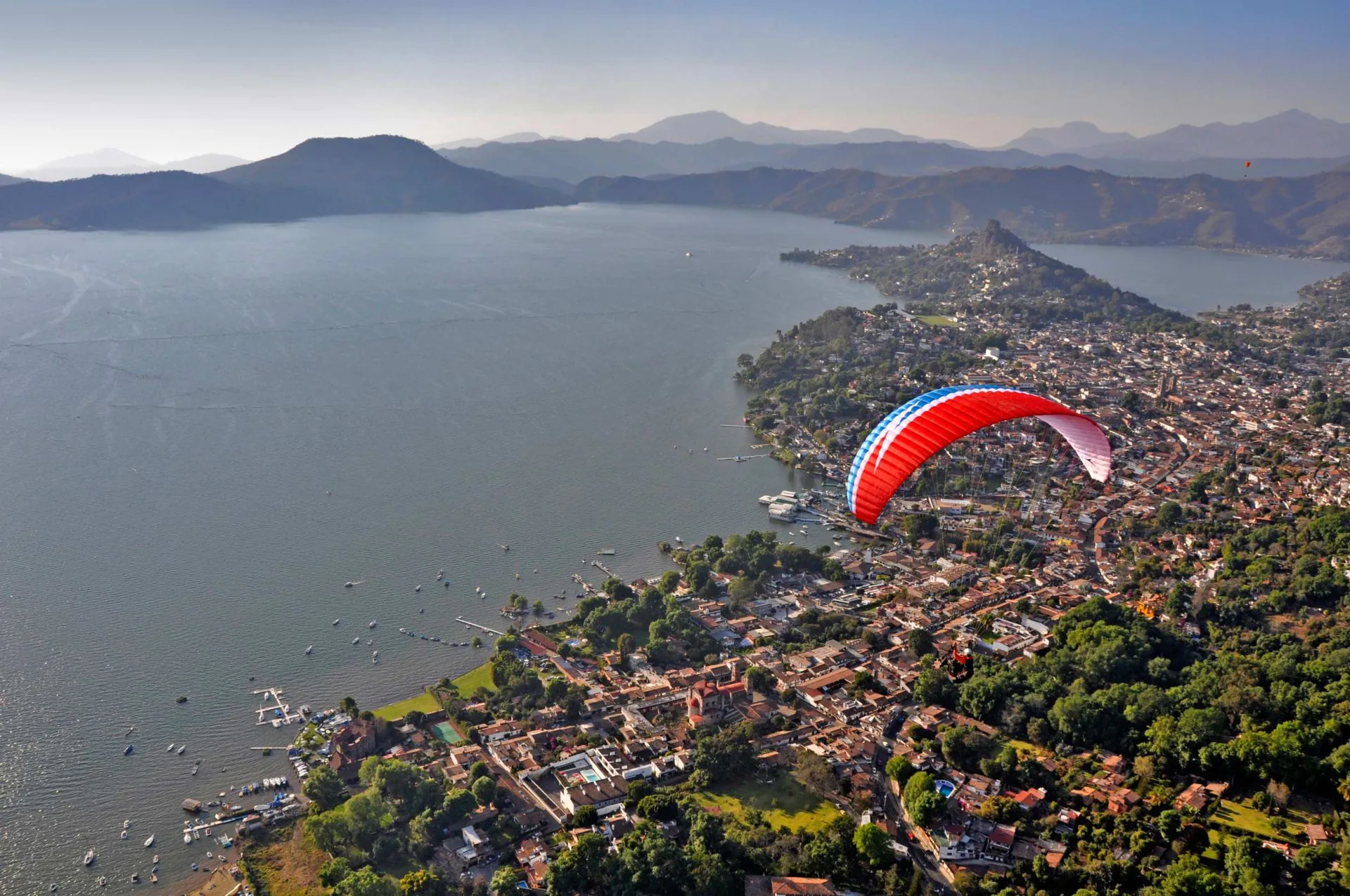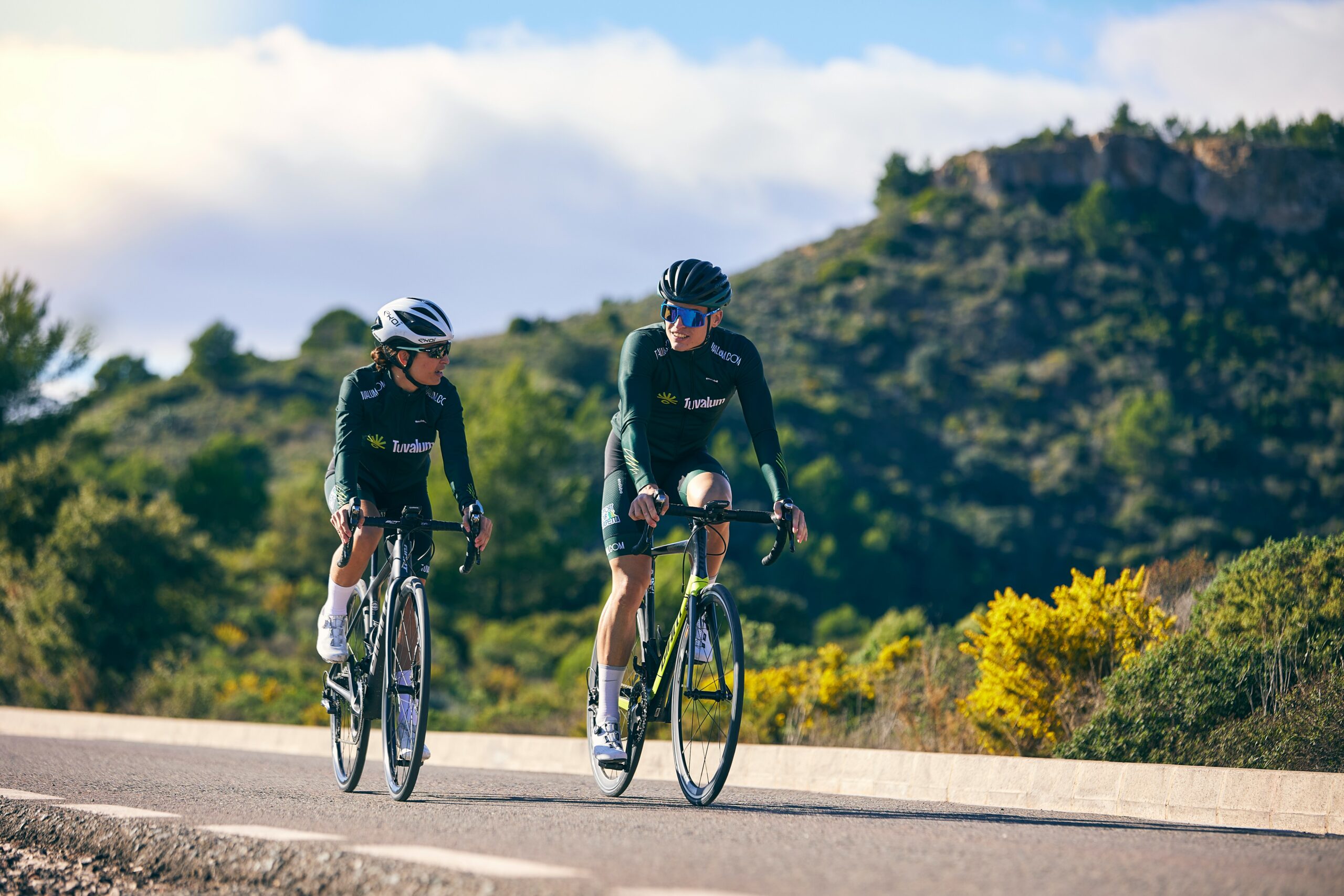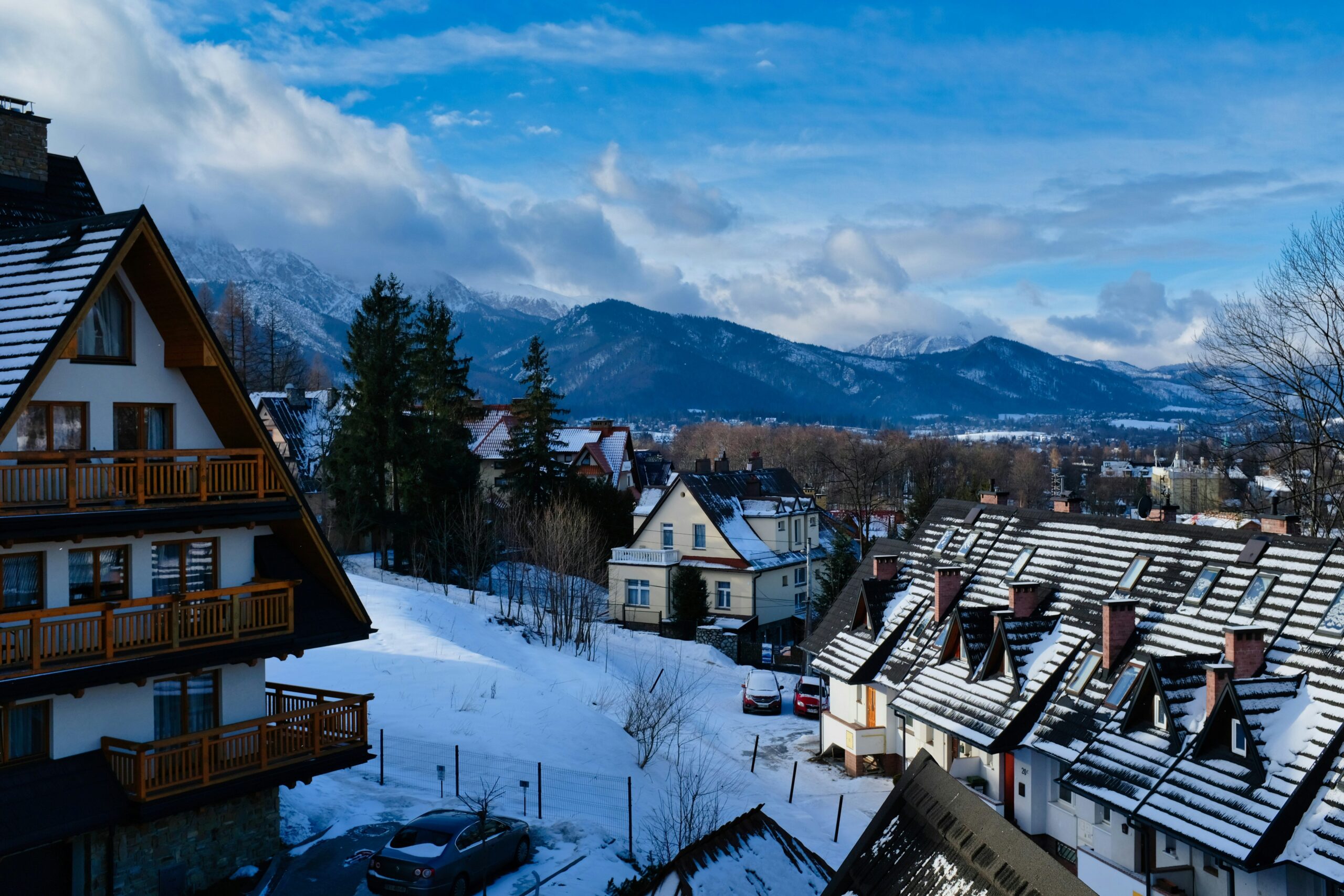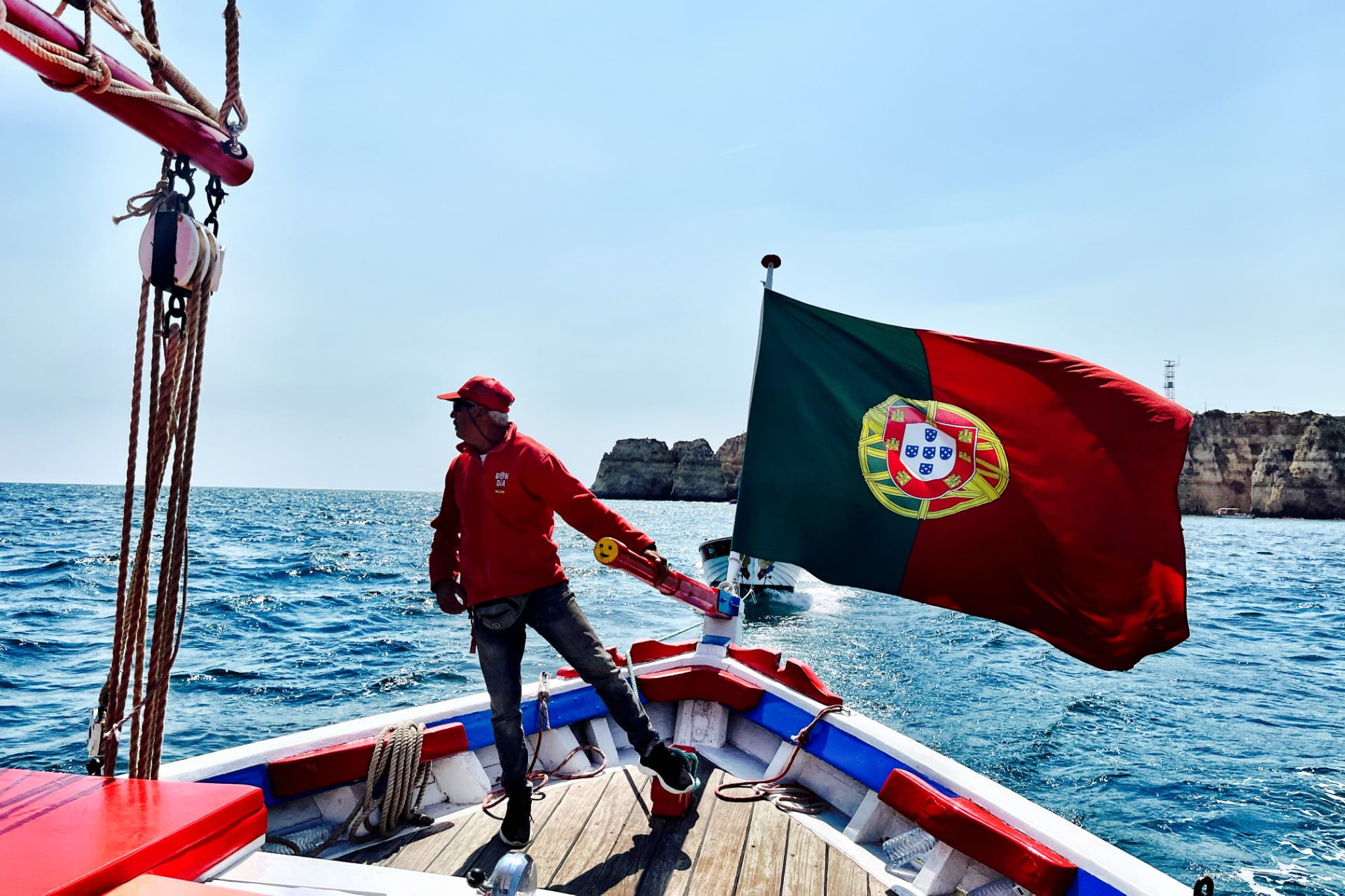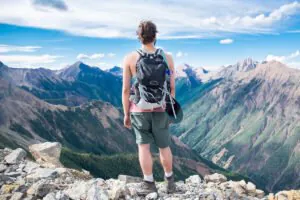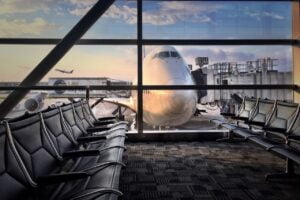Valle de Bravo: Mexico’s Mountain Lake Paradise Just Hours from the Capital
Two hours west of Mexico City’s bustling streets, the road winds through pine forests and volcanic peaks before revealing Valle de Bravo—a colonial town wrapped around a pristine lake that’s become Mexico’s answer to Switzerland. Red-tiled roofs cascade down hillsides toward the water’s edge, while paragliders drift overhead like colorful butterflies against the mountain backdrop.
This isn’t your typical Mexican beach destination. Valle de Bravo has quietly evolved into a sophisticated retreat where Mexico City’s elite escape on weekends, international paragliding champions train for competitions, and an increasing number of remote workers have discovered they can live like royalty on a fraction of what they’d spend in Tulum or San Miguel de Allende.
The town walks a fascinating line between authenticity and accessibility. You’ll find street vendors selling fresh corn with chili and lime next to artisanal coffee shops with Wi-Fi strong enough for video calls. Ancient Mazahua traditions blend seamlessly with modern wellness retreats and adventure sports outfitters.
Why Valle de Bravo Makes Perfect Sense
Most travelers rushing between Mexico City and beach destinations never realize they’re passing one of the country’s most captivating towns. Valle de Bravo’s location—just 140 kilometers from the capital—makes it ridiculously convenient for both quick getaways and extended stays.
What sets this place apart is its remarkable versatility. Morning coffee overlooking the lake evolves into afternoon paragliding sessions, which transition into evening tacos at a plaza filled with live mariachi music. The town serves dual masters beautifully: adrenaline junkies find world-class outdoor adventures, while digital nomads discover a peaceful base with all the infrastructure they need.
For remote workers, Valle de Bravo presents an compelling alternative to oversaturated hotspots. The cost of living rivals smaller Mexican towns, but you’re never more than two hours from Mexico City’s international airport, coworking scene, and business opportunities.
Read More: Tourism Valle de Bravo
Getting There: Your Route to the Mountains
By Bus: Terminal de Autobuses de Observatorio in Mexico City connects directly to Valle de Bravo multiple times daily. The 2.5-3 hour journey costs 250-350 pesos (roughly $15-20 USD) and offers scenic mountain views as you climb toward the lake. Several bus companies operate this route, with Zinacantepec and Herradura de Plata being the most reliable.
By Car: Renting wheels gives you freedom to explore the region’s hidden waterfalls and butterfly sanctuaries at your own pace. The drive from Mexico City takes about two hours via Highway 15, passing through Toluca. Weekend traffic can extend this considerably, so plan accordingly.
By Tour: Day trips from Mexico City are available, though they barely scratch the surface. To properly experience Valle de Bravo’s rhythm—watching sunrise over the lake, exploring mountain trails, experiencing the evening plaza scene—plan for at least three days.
International travelers typically fly into Mexico City International Airport (AICM), then continue overland to Valle de Bravo.
Visa Logistics: Simpler Than You Think
Mexico’s immigration policies favor travelers. Citizens from the United States, Canada, European Union countries, Australia, and many other nations can enter visa-free for up to 180 days for tourism or business purposes. Always verify current requirements on Mexico’s official immigration website before traveling.
This generous 180-day allowance makes Valle de Bravo particularly attractive for digital nomads testing out extended stays without bureaucratic complications. Just remember to keep your tourist card (FMM) safe—you’ll need it when departing Mexico.
Accommodation: From Backpacker to Boutique
Valle de Bravo’s lodging scene has evolved dramatically over the past decade, now offering something for every budget and style.
Budget-Conscious Travelers: Hostels like Hostal El Arco and La Capilla provide clean, basic accommodations starting around $15-30 USD nightly. These spots often become informal networking hubs for other travelers and remote workers passing through.
Mid-Range Comfort: Boutique properties like Hotel Boutique D’Paola and Casa Chichipicas masterfully blend colonial architecture with modern amenities. Expect locally-sourced breakfast, artisanal touches, and rates that would be considered bargains in comparable European lake towns.
Vacation Rentals: Airbnb and Vrbo offer extensive options, from lakefront apartments perfect for morning swims to mountain cabins ideal for digital detox retreats. Many properties cater specifically to remote workers with dedicated office spaces and high-speed internet.
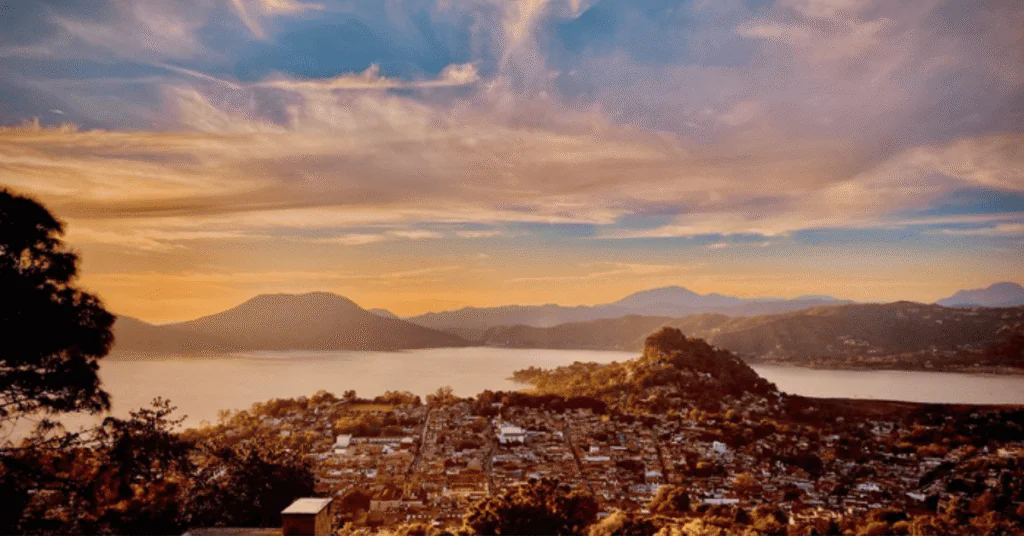
Daily Budget: What Your Money Buys
Valle de Bravo delivers exceptional value compared to other international destinations. Daily expenses for comfortable travel typically break down as follows:
Accommodation: $20-100 USD per night, depending on your standards and season Food: $10-25 USD daily eating at local restaurants; upscale dining runs higher Transportation: Local buses and taxis are remarkably cheap; car rentals average $40-70 USD daily Activities: Many hiking trails are free; paragliding costs $60-80 USD, boat trips $5-10 USD, nature reserve entrance fees around $3-5 USD
Budget $40-80 USD per day for a comfortable experience, with luxury options available for those wanting to splurge.
Adventures Await: Valle de Bravo’s Greatest Hits
Lake Avándaro: The Town’s Liquid Heart
The artificial lake created in 1947 remains Valle de Bravo’s defining feature. Rent a sailboat to catch morning thermals used by paragliders overhead, join group boat excursions to hidden coves, or simply claim a waterfront restaurant table for sunset watching. The light reflecting off the water during golden hour creates photography opportunities that rival anywhere in Mexico.
Paragliding Capital of Latin America
Valle de Bravo hosts international paragliding competitions for good reason—the mountain thermals and stunning scenery create ideal flying conditions. Complete beginners can book tandem flights with certified instructors, while experienced pilots will find excellent launch sites and favorable conditions most of the year. Alas del Hombre has built a stellar reputation for safety and professionalism among both locals and international visitors.
Monarch Butterfly Migration
Between November and March, millions of monarch butterflies transform the surrounding forests into living tapestries of orange and black. The Piedra Herrada sanctuary, accessible by tour or personal vehicle, offers one of nature’s most spectacular displays. Time your visit for mid-morning when butterflies are most active and the light illuminates their wings like stained glass.
Colonial Downtown Exploration
Plaza Independencia serves as the town’s social nucleus, surrounded by colonial buildings housing artisan shops, cafes, and restaurants. The 17th-century Parroquia de San Francisco de Asís dominates one side of the square with impressive stone architecture. The weekly artisan market showcases regional crafts and makes for excellent souvenir hunting without tourist markup.
Velo de Novia Waterfall
This easily accessible waterfall in the Avándaro neighborhood provides a refreshing natural escape. The short hike through pine forest leads to a cascading waterfall perfect for photos and brief swimming in warmer months.
Culinary Scene: Mountain Flavors Meet Global Tastes
Valle de Bravo’s food scene reflects its geographic position and cosmopolitan visitors. Fresh trout from the lake appears on most menus, prepared simply grilled or stuffed with local herbs. Street food maintains strong traditional roots—elotes (grilled corn) and esquites (corn cups) topped with mayo, cheese, chili, and lime provide perfect snacks between activities.
The coffee culture has exploded in recent years. Cafes like Los Pericos and La Estación source beans from nearby Veracruz and Chiapas, creating spaces equally suited for casual socializing or focused remote work. Many of these establishments have become informal coworking hubs where digital nomads naturally congregate.
Casual meals cost $3-6 USD, while upscale restaurants average $10-20 USD per plate—remarkable value considering the quality and setting.
Safety and Practical Considerations
Valle de Bravo maintains a well-deserved reputation for safety among both Mexican and international travelers. The town’s economy depends heavily on tourism, creating strong incentives for maintaining security and visitor-friendly conditions. Local residents are generally helpful and welcoming to foreigners.
Standard travel precautions apply: avoid displaying expensive electronics or jewelry, use hotel safes for valuables, and maintain awareness of surroundings, particularly after dark. Petty theft can occur anywhere tourists congregate, but violent crime remains rare.
For current security updates, consult the U.S. State Department’s travel advisories or equivalent resources from your home country.
Digital Nomad Infrastructure
Most accommodations, cafes, and restaurants offer reliable Wi-Fi suitable for basic remote work needs. While Valle de Bravo doesn’t yet have the extensive coworking infrastructure of Mexico City or Playa del Carmen, spaces like La Estación Cafe have adapted to serve the growing remote worker population.
For more intensive internet needs or important video conferences, consider timing short trips to Mexico City for meetings, client calls, or networking events. The proximity makes this entirely practical for most remote work situations.
Timing Your Visit
Valle de Bravo enjoys pleasant weather year-round thanks to its mountain elevation, but seasonal variations affect activities and scenery. The dry season (November through April) offers ideal conditions for paragliding, hiking, and most outdoor activities. Clear skies provide better mountain views and more predictable weather patterns.
The rainy season (May through October) transforms the landscape into lush greens but can limit some activities. However, afternoon thunderstorms often pass quickly, and the cooler temperatures can be refreshing. If witnessing the monarch butterfly migration is a priority, plan your visit between December and February.
The Secret to Valle de Bravo
Most visitors arrive with day-trip mentalities and leave wishing they’d planned longer stays. Valle de Bravo reveals its character gradually—the way morning mist rises off the lake, how locals gather in the plaza for evening strolls, the sound of church bells echoing off mountain walls.
The town’s magic isn’t in any single attraction but in the accumulated experience of mountain mornings, lake afternoons, and plaza evenings. Stay long enough to fall into Valle de Bravo’s natural rhythm, and you’ll understand why so many visitors end up extending their stays or planning return trips.
This isn’t just another Mexican destination to check off a list—it’s a place that gets under your skin and makes you reconsider what you’re looking for in travel.
Related Post: Digital Nomad Visa in Mexico: Everything You Need to Know
